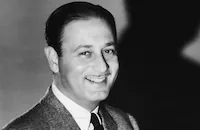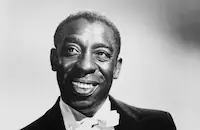The Death Kiss

Brief Synopsis
Cast & Crew
Edwin L. Marin
David Manners
Adrienne Ames
Bela Lugosi
John Wray
Vince Barnett
Film Details
Technical Specs

Synopsis
During the filming of a scene in Tonart Studio's production of The Death Kiss , actress Marcia Lane identifies a fictional character to be shot by kissing him. After actor Myles Brent is actually shot, Leon A. Grossmith, the studio head who mildly mangles the English language, worries about the financial impact of the murder, and studio manager Joseph Steiner is concerned about publicity, while the common feeling on the set is that Brent should have been murdered long ago. Detective Lieutenant Sheehan and Sergeant Hilliker begin to investigate, while scenario writer Franklyn Drew, who loves Marcia and likes murder mysteries, irritates Sheehan when, with the assistance of Officer Gulliver, the bumbling chief of studio police, he discovers evidence that refutes Sheehan's conclusions. Suspicion is first raised about Chalmers, an alcoholic ex-head gaffer whom Brent had fired. After Chalmers' apparent suicide, which Frank proves is murder, Marcia is arrested due to circumstantial evidence, and Frank finds a love letter in Brent's pocket from Steiner's wife and a key from an inn up the coast. He investigates and learns of a fight the previous night between Brent and the man whose wife Brent took there. After Frank finds the man's scribblings and matches them to those found during a meeting attended by Grossmith, Steiner and director Tom Avery, he learns of a clue from Bill, the property man, which identifies the murderer. As the murder scene is being recreated, Bill is about to reveal the man's name, when the murderer, hearing the conversation through the sound man's earphones, shuts off the lights and climbs to the catwalks. After a chase he falls to his death, and when the lights are turned on, the company sees that Avery is the murderer. His wife sees the body and says she's glad he's dead.

Director

Edwin L. Marin
Cast

David Manners

Adrienne Ames

Bela Lugosi

John Wray

Vince Barnett
Alexander Carr

Edward Van Sloan
Harold Minjir
Barbara Bedford
Al Hill
Harold Waldridge
Wade Boteler
Lee Moran
Alan Roscoe

Mona Maris
Edmund Burns
James Donlan

King Baggott

Clarence Muse
Crew

Film Details
Technical Specs

Articles
The Death Kiss
On the surface, Edwin L. Marin's The Death Kiss (1932) appears to be a return to Transylvanian terror -- especially since Lugosi was joined in the cast by two other Dracula principals: David Manners and Edward Van Sloan. The title and the casting seem to indicate that Lugosi would once again be creeping into sleeping maidens' boudoirs and preying on their innocence. But he doesn't. The Death Kiss is full of surprises, and this is just one way in which the film toys with the audience's expectations. Not just another vampire movie, this low-budget production is actually a whodunit mystery, cleverly set on the soundstages of a financially strapped movie studio.
The film's title is also the name of the film-within-the-film, during the making of which the leading man, Myles Brent (Edmund Burns), is fatally shot with live ammunition instead of blanks. Detective Sheehan (John Wray) descends on the scene and tramps through the studio giving various suspects the scattershot third degree, without any real clue as to how to solve the mystery. Lugosi plays Joseph Steiner, the Tonart Studios manager who tries to keep a lid on the scandal and keep the studio running amid the suspicions, rumors and threat of additional fatalities. Van Sloan (who was the wizened vampire-hunter in Dracula) is the wild-eyed director trying to finish his cursed film. Manners leads the cast as Franklyn Drew, a sharp-tongued scenarist who teases the bumbling detective with his superior knowledge and urbane wit, and decides to solve the deadly riddle himself, in order to clear blame from the picture's leading lady, Marcia Lane (Adrienne Ames).
Lugosi's creepy on-screen persona was used cleverly, if deceptively, by the makers of The Death Kiss. In its review, The New York Times explained, "Perhaps the most ingenious element in the film is that which makes Bela Lugosi a leading suspect up to the very end. Mr. Lugosi's reputation in these cinema crimes makes it almost impossible for the amateur sleuths out front to dismiss him from suspicion. As a smoke screen, Mr. Lugosi is rather more effective than he has been recently in the more showy roles of ghoulish madmen." To be reduced to a walking red herring was perhaps not the smartest career move, post-Dracula, but The Death Kiss required very little of his time (judging by Lugosi's screen time, his scenes were probably shot in two days), and was little more than a lark, a tongue-in-cheek reunion with his Dracula cast members that probably came with a reasonably large paycheck. Lugosi frequently took these "harmless" bit parts and cameos -- perhaps for the sheer enjoyment of filmmaking -- but in time they damaged his reputation as a serious actor and further typecast him as a skulking two-dimensional villain.
By late 1932, the Great Depression had settled over the U.S. and was beginning to suffocate the film industry, forcing it to devise new approaches and economic models in order to survive. It was especially difficult for independent companies such as The Death Kiss's K.B.S. Productions, which did not have the resources to compete with the major studios' elegant and extravagant A-pictures. In this case, the company compensated for its modest means by trucking out a variety of cheap gimmicks to lure ticket-buyers to the box-office. Reuniting the cast of Dracula was one such gimmick, as was the formula of the backstage murder mystery.
The behind-the-scenes whodunit was not such a novelty in 1933. If anything it was almost its own subgenre of the mystery film. Filmmakers varied the setting from movie studio (Frank Tuttle's The Studio Murder Mystery [1929]) to theatre (Paul Leni's The Last Warning [1929]) to radio station (Howard Bretherton's Up in the Air [1940]), but the formula remained essentially the same.
In such films the process of solving the crimes is usually less interesting than the revelations of the workings of show business that are ordinarily hidden from view. In The Death Kiss the viewer gets a precious glimpse into the modest mechanics of the Tiffany Studios, where the film was shot. Thus we see the finest dressing rooms, screening rooms, and offices that a cash-strapped producer of 1932 could afford. The independent studios in the vicinity of Sunset Boulevard and Gower Street were known as Poverty Row. As the nickname suggests, they were studios that specialized in low-budget productions, and often rented their facilities to production companies that couldn't afford their own brick-and-mortar studios -- companies such as K.B.S. Productions.
For K.B.S., the behind-the-scenes gimmick had an extra value. Shooting on the studio grounds (and in the studio hallways, and in studio makeup rooms) saved them the cost of building and decorating sets, and the logistical problems of taking a crew on location.
Low-budget, quickly-shot films such as The Death Kiss seldom waste time on clever or innovative camerawork, but the film does have one or two memorable visual moments. At one point, the authorities and studio management decide to screen the footage of the actor's death. But the motion picture evidence bursts into flame while running through the projector. Although this is a black-and-white movie, the screen turns a bubbly orange and the image is obscured right at the moment of Brent's murder. The smoke billowing from the projection booth is also tinged with red and orange. The effect was achieved by hand-painting each frame of the film to the desired effect. It was a cheap trick, but an effective one. When The Death Kiss was first screened to a preview audience on December 5, 1932, the response to the color sequence was so strong that the producers delayed the release from December 25 until January, to allow for every print in distribution to be graced with the hand-tinted flames.
The Death Kiss had its New York premiere on February 3 at a most unlikely venue, the Roxy Theatre on Seventh Avenue, a lavish 6,000-seat silent movie palace that had fallen onto hard times. Such a grandiose setting would not seem to suit a film so openly lowbrow, comprised of so much cheap gimmickry. Rather than give the film a sophisticated red-carpet treatment, the distributor (Sono Art - World Wide Pictures) and the theater management took the opposite approach: dropping ticket prices and turning the glamorous Roxy into a ribald music hall. The New York Times reported "a speedy variety vaudeville program replaced the ballets and pageants of other days [and] the effect on the performers was electric. Rhythms quickened, feet kicked higher and faster, songs were sung with a new dash and jokes crackled with a new fervor." The rowdy stage entertainment included The Three Gobs, The Bartlett Girls and a hillbilly jug band known as the Radio Rubes. New York ate it up.
"To handle the entertainment hunters in the militaristic tradition of the Roxy, the ushers dug down into their tactical manuals and brought out strategical manoeuvres, deployments, counter-marches and untabulated miles of rope -- the likes of which had not been required in a long time."
The Times wistfully reported, "The hum and bustle of an excited and overflowing audience is a special kind of thrill."
Director: Edwin L. Marin
Producer: E.W. Hammons
Screenplay: Barry Barringer and Gordon Kahn, based on the novel by Madelon St. Dennis
Cinematography: Norbert Brodine
Production Design: Ralph M. DeLacy
Music: Val Burton
Cast: David Manners (Franklyn Drew), Bela Lugosi (Joseph Steiner), Edward Van Sloan (Tom Avery), Adrienne Ames (Marcia Lane), John Wray (Detective Lt. Sheehan), Edmund Burns (Myles Brent).
BW-72m.
by Bret Wood

The Death Kiss
Quotes
Trivia
Notes
This film was produced at the California Tiffany Studios. It was previewed in San Bernadino on December 5, 1932. This was Edwin L. Marin's first film as a director. According to a Film Daily news item, Adrienne Ames was borrowed from Paramount. According to Hollywood Reporter news items, the film was originally to be released nationally on December 25, 1932, but its release was held up so that some tinted sequences could be added. Modern sources list the following additional credits: Music Director Val Burton; Cast: Wilson Binge (Doorman), Eddy Chandler (Mechanic), Harry Strang (Gaffer), Eddie Boland (Bill), Frank O'Connor (Cop), Forest Taylor, Paul Porcasi.














